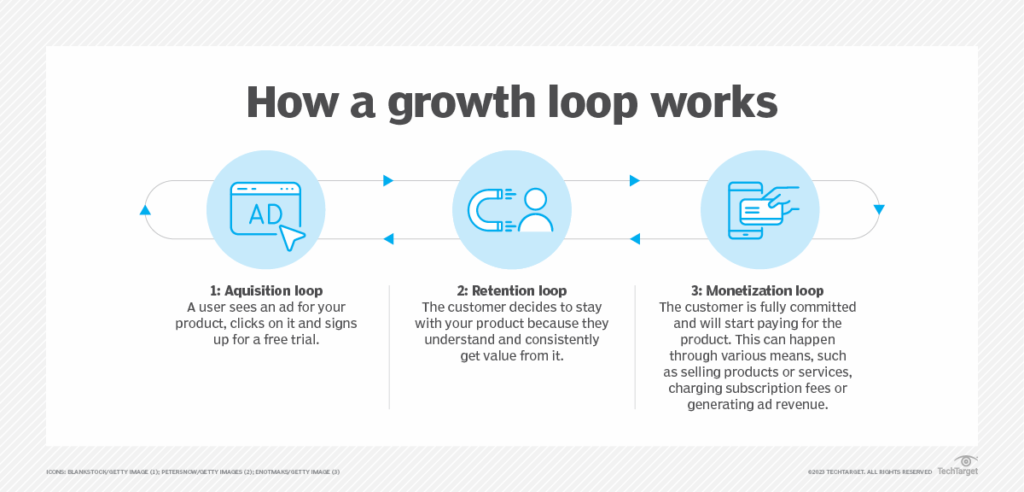
In the modern digital landscape, product-led growth has emerged as a powerful and efficient growth strategy that aligns with customers' preferences and expectations.
Product-led growth (PLG) centers the product as the primary driver for customer acquisition, engagement, retention and expansion. In a PLG strategy, the product itself is designed to be intuitive, user-friendly and valuable, enabling users to easily adopt and get value from it without extensive effort from sales and marketing teams.
PLG often leads to lower customer acquisition costs, faster adoption rates, higher user engagement and increased customer loyalty.
However, PLG has made sales and marketing teams wonder if their roles will become obsolete. In short, no -- they aren't going anywhere. Marketers still hold the key to attracting users while sales reps amplify monthly recurring revenue. However, you should use PLG alongside existing efforts to gain a competitive edge in the market.
Growth isn't sequential
When you find product-market fit, you should distribute your product or service in a cost-effective way to grow your business. This process is known as the sales funnel. However, growth is only possible if you can help customers efficiently navigate their journeys through the funnel. If you can't drive product growth, it doesn't matter how good the offering is.
Further, this model requires a constant and increasing flow of potential users to function. You must acquire, retain and monetize your customer base. However, generating revenue, activating and retaining customers, and getting referrals creates silos within an organization
Sales funnels vs. growth loops
The linear sales funnel is a traditional approach to sales and marketing. It represents a step-by-step process detailing customers' actions, ideally leading to conversions, which produce more revenue over a customer's lifetime than acquisition. The sales funnel assumes that customer acquisition is an event, not a process. The funnel is a natural visual aid since the number of potential customers decreases as they move toward the final conversion stage, with only a fraction making a purchase.
The growth loop is a cyclical approach that recognizes how customer acquisition, retention and monetization are interconnected and ongoing processes. Growth loops account for the fact that one customer's actions lead to more customers, creating a self-reinforcing cycle.
The future of PLG
PLG might become the dominant go-to-market strategy for B2B SaaS companies. It is disrupting the way vendors sell software. Product-led strategies are becoming increasingly effective due to advances in AI and machine learning (ML).
Businesses can use AI and ML to personalize CX, identify and fix usability issues, and predict churn. We can expect to see new tools and technologies emerge that are specifically designed to help companies implement and execute PLG strategies. PLG is currently most popular in the SaaS industry, but it has the potential to be successful in various other industries, as well.
The original content of the note was published on Techtarget.com. To read the full note visit here